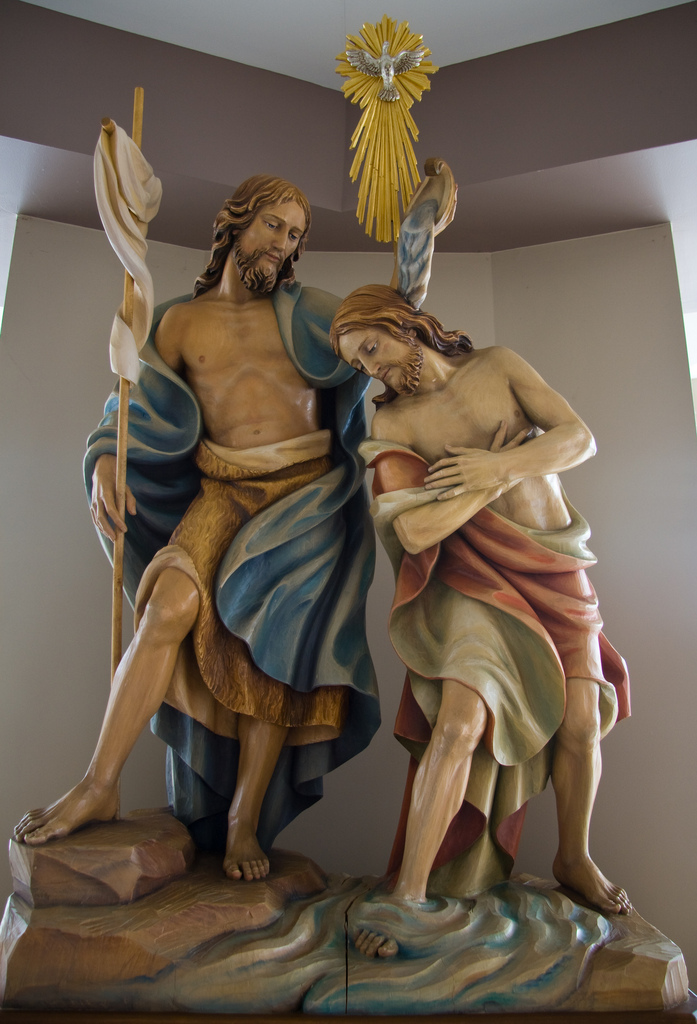
|
2 Epiphany
Isa. 49:1-7 • Ps. 40:1-12
1 Cor. 1:1-9 • John 1:29-42
John comes and then Jesus comes, although Jesus ranks ahead of him and before him. First there is water baptism and then water, blood, and fire. Things change. A divine economy is at work in the passage of times and seasons. We wait patiently for the Lord, and then the Lord inclines (Ps. 40:1). There is a season to wait and a season to welcome the arrival. There is a season for endings too. “A little while, and you will no longer see me” (John 16:16). Does the pain of this pierce as it should, the march of time to a bitter end, every love ending sometime, somewhere, every project shelved and forgotten?
The Son of Man has nowhere to lay his head, and so, in union with him, we wander as resident aliens (1 Peter 2:11). We go from place to place, from one sorrow to another, and the pain can seem unbearable. Yet he who deigned to become what we are lives still in the bosom of the Father. Rejection and death and hell cannot make him other than the still Word formed in silence. He is where the Father is; and we, by grace and faith, may be where the Son is, living in Christ with God.
Pointedly, Jesus asks, “What are you looking for?” (John 1:38). As if answering for every human being, the first disciples form another question: “Where are you staying?” Jesus calls out, “Come and see.” What follows is the very heart of discipleship: “They remained with him that day” (John 1:39). With the Lord, one day is like a thousand years stretching out to the close of the age when Christ will burst forth as the consummation and end of all things. “Where I am, there you may be also” (John 14:3). This is what Jesus wants, sisters and brothers caught up into his life, so that they too live there, in the heart of the Father. This is a place to remain.
Opening his epistle to the Church in Corinth, St. Paul begins not with a list of the internal struggles for which this community is known, but rather with a statement of gratitude for “the grace of God that has been given you in Christ Jesus” (1 Cor. 1:4). They are enriched in every way, he says, in speech and knowledge, lacking in no spiritual gift. He concludes his salutation affirming that they “were called to the fellowship of his Son, Jesus Christ our Lord” (1 Cor. 1:9). Koinonia, the Greek word translated as fellowship, has long been acknowledged to carry deep meanings of mutual sharing, partnership, and togetherness in the life of Christ. Capturing another aspect of this, the Vulgate tradition has used the word societas, suggesting a shared life in Christ larger than any local community. Indeed, Paul addresses the saints in Corinth, “together will all those in every place” (1 Cor. 1:2).
The Church is the society where Christ is. “For where two or three are gathered together in my name, there am I in the midst of them” (Matt. 18:20, KJV). These words bear repeating: “There am I.” To live in Christ is to feel and know something like the safety and stability of a monastic enclosure (The Rule of St. Benedict, Caput 4). Christ simply is.
Yes, we feel at times as if we have fallen into a desolate pit and wallow in a miry bog (Ps. 40:2), and it does not harm faith to say so again and again. Still, the rock upon which our feet are set, the place where we remain, the presence that remains with us, is secure forevermore.
Look It Up
Read John 1:39. Give this time.
Think About It
Read Psalm 40:2. Feel the ground. Steady yourself. Now walk.









